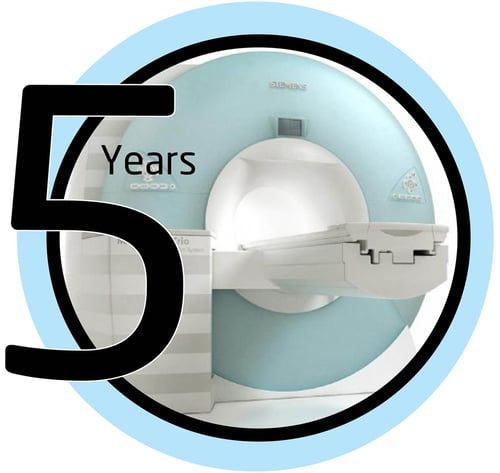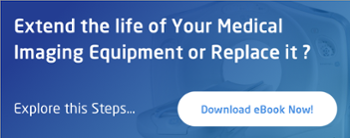Fifty years ago, Paul Lauterbur published his groundbreaking Nature paper which established zeugmatography—or magnetic resonance imaging/MRI—as a viable way to use magnetic field and radiofrequency signals to visualize objects. Lauterbur ‘s first human MRI scanner is located in the Illinois MRI Exhibit at the Beckman Institute for Advanced Science and Technology. He was recruited to the University of Illinois Urbana-Champaign in the 1980s. He won the 2003 Nobel Prize in Physiology of Medicine for developing MRI with Sir Peter Mansfield, a British physicist.
use magnetic field and radiofrequency signals to visualize objects. Lauterbur ‘s first human MRI scanner is located in the Illinois MRI Exhibit at the Beckman Institute for Advanced Science and Technology. He was recruited to the University of Illinois Urbana-Champaign in the 1980s. He won the 2003 Nobel Prize in Physiology of Medicine for developing MRI with Sir Peter Mansfield, a British physicist.
Since that time, MRI has become an essential tool for doctors to view inside the body and see soft tissue like the heart, brain and other muscles and organs. MRI images help doctors understand what is happening in disease. MRI lets you view the status of tissue, observe shapes, blood flow, inflammation and even the changing shape of soft tissue. Because MRUI enables doctors to look inside the body quickly and clearly, advanced treatments have been developed which has led to longer, healthier lives.
MRI is a flexible imaging technique, and MRI scanners have continued to improve over the years. The unit of measure for magnetic field strength is Teslas. The earth’s magnetic field is approximately 0.00005 Tesla. Lauterbur’s first human MRI magnet was 0.09 Teslas. That’s about 2,000 times the Earth’s magnetic field. He was able to see structures in the body, but the resolutions were grainy and at low resolutions.
Today’s MRI systems are 1.5T, 3T, but recently an MRI magnet that’s 7 Tesla was purchased by the University of Illinois Urbana-Champaign and Carle Hospital. It’s 75 times stronger than Lauterbur’s original magnet and allows us to localize function in the brain down to 0.5 millimeters with clarity and excellent contrast.
MRI imaging continues to evolve and improve, thanks to higher magnetic field which provide even higher spatial resolution images of the brain and body. New MRI systems that are small and portable are now available. Who knows what MRI imaging will accomplish in the years to come?
Talk To An Expert
Over 40 million MRIs were performed in the U.S. last year, and no doubt its use will continue to grow. If you’re in need of a new MRI scanner, talk to the experts at Atlantis Worldwide. A used or refurbished MRI system could provide you with the performance you need, at a much lower price point—and still deliver a beefy service warranty.
Contact Atlantis Worldwide today.
Some blogs you may have missed:
- The Future of Helium & MRIs
- MRI Cold Head Tips
- Service Contracts for Imaging Systems: Penny Wise and Pound Foolish?
- Radiologists, Healthcare & Social Media
- Should your business lease or buy medical imaging equipment?
- Free MRI Resources
Meet the author: Vikki Harmonay



